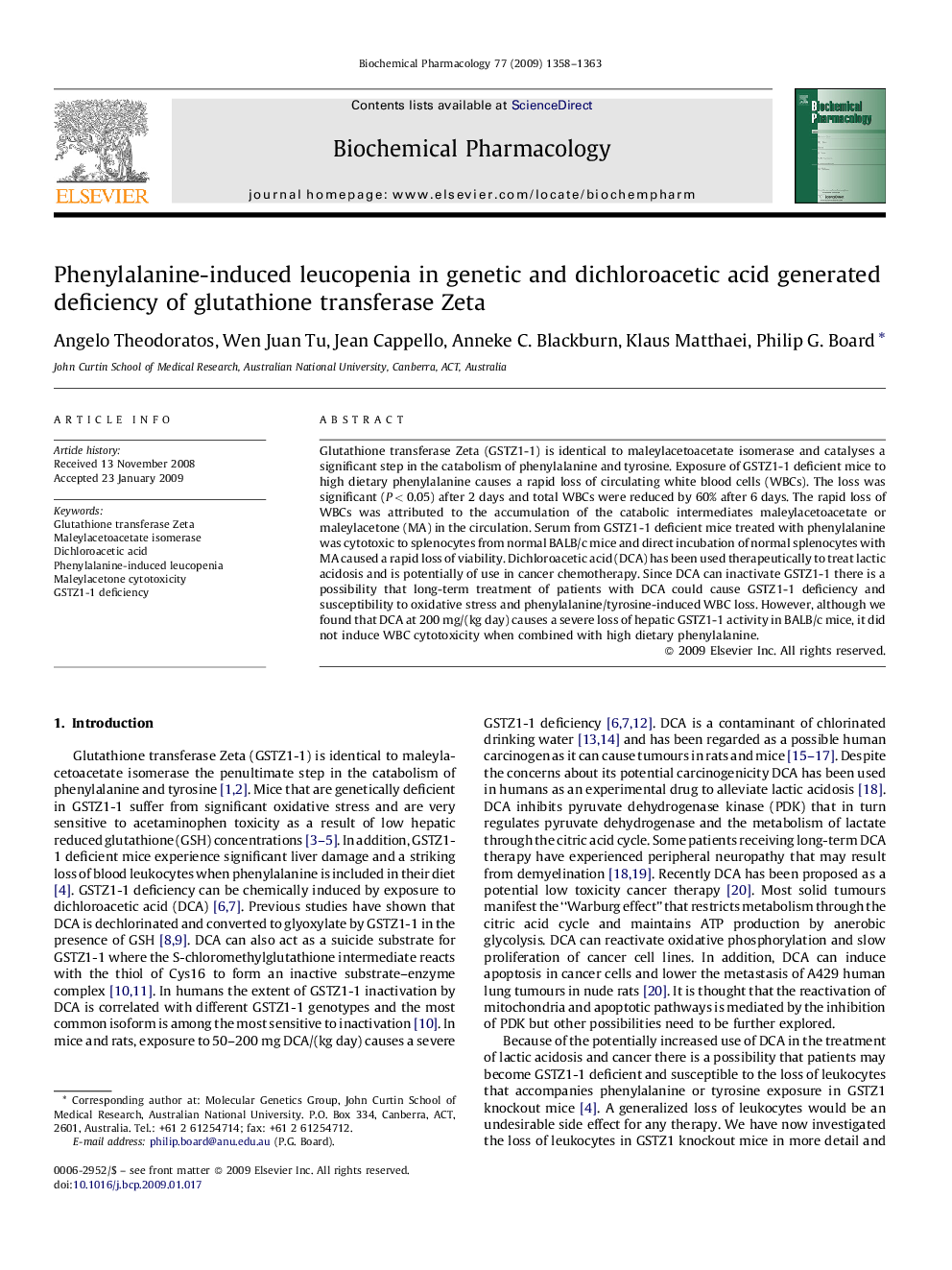| کد مقاله | کد نشریه | سال انتشار | مقاله انگلیسی | نسخه تمام متن |
|---|---|---|---|---|
| 2514128 | 1118450 | 2009 | 6 صفحه PDF | دانلود رایگان |

Glutathione transferase Zeta (GSTZ1-1) is identical to maleylacetoacetate isomerase and catalyses a significant step in the catabolism of phenylalanine and tyrosine. Exposure of GSTZ1-1 deficient mice to high dietary phenylalanine causes a rapid loss of circulating white blood cells (WBCs). The loss was significant (P < 0.05) after 2 days and total WBCs were reduced by 60% after 6 days. The rapid loss of WBCs was attributed to the accumulation of the catabolic intermediates maleylacetoacetate or maleylacetone (MA) in the circulation. Serum from GSTZ1-1 deficient mice treated with phenylalanine was cytotoxic to splenocytes from normal BALB/c mice and direct incubation of normal splenocytes with MA caused a rapid loss of viability. Dichloroacetic acid (DCA) has been used therapeutically to treat lactic acidosis and is potentially of use in cancer chemotherapy. Since DCA can inactivate GSTZ1-1 there is a possibility that long-term treatment of patients with DCA could cause GSTZ1-1 deficiency and susceptibility to oxidative stress and phenylalanine/tyrosine-induced WBC loss. However, although we found that DCA at 200 mg/(kg day) causes a severe loss of hepatic GSTZ1-1 activity in BALB/c mice, it did not induce WBC cytotoxicity when combined with high dietary phenylalanine.
Figure optionsDownload as PowerPoint slide
Journal: Biochemical Pharmacology - Volume 77, Issue 8, 15 April 2009, Pages 1358–1363